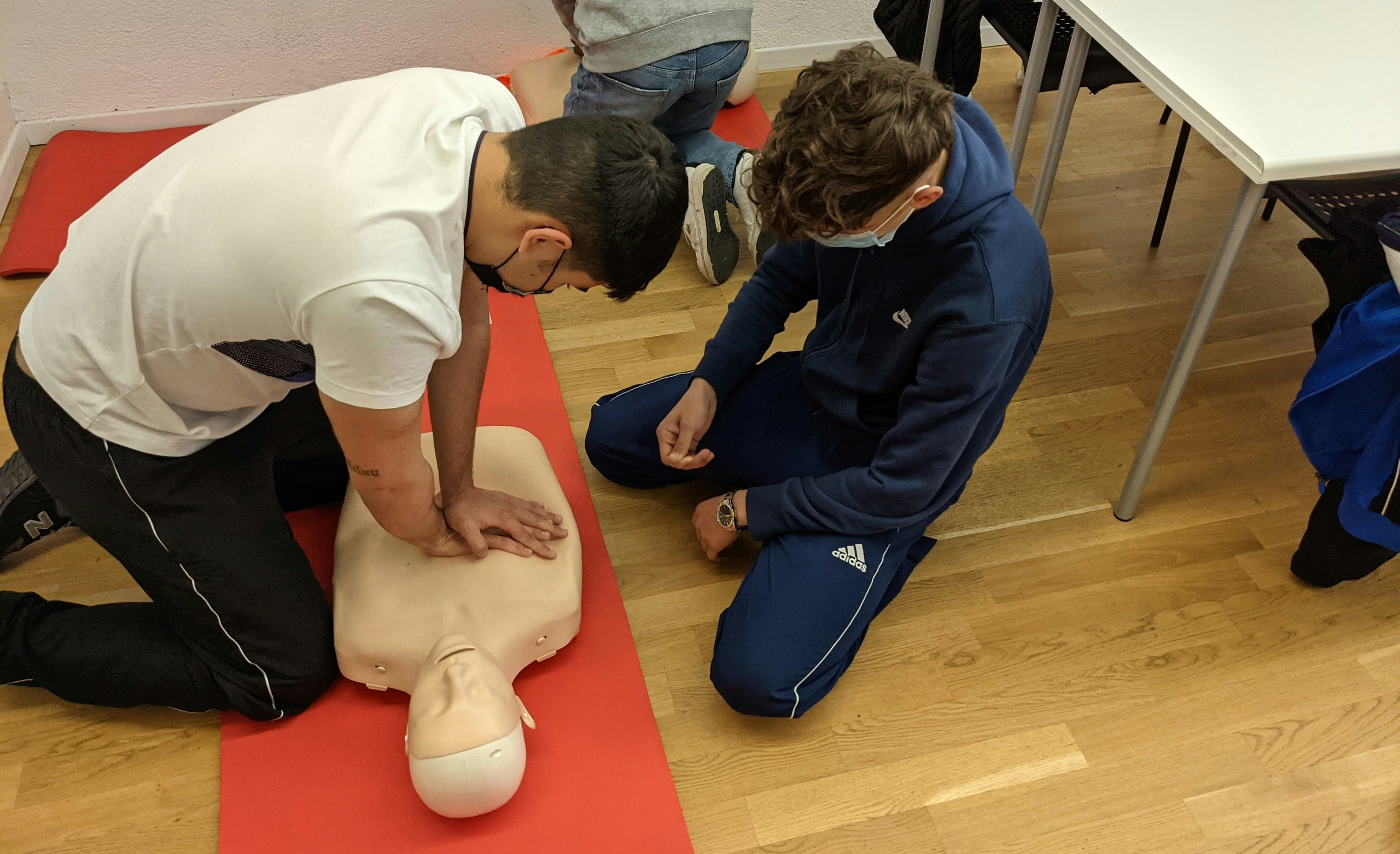
Learning CPR For Emergency Situations
Welcome to our step-by-step guide on learning CPR for emergency situations. When emergencies strike, every second counts. Knowing how to perform CPR can mean the difference between life and death. While it’s a skill that many people hope they’ll never have to use, being prepared is essential.
Learning CPR for emergency situations equips you with the knowledge and confidence needed to respond effectively when someone’s heart stops or they stop breathing. Imagine witnessing a loved one collapse in front of you—panic might set in, but with CPR training under your belt, you’ll be ready to act.
This lifesaving technique isn’t just reserved for healthcare professionals; anyone can learn it. Whether you’re a parent, caregiver, or simply someone who wants to make a difference during an emergency, understanding cardiopulmonary resuscitation is invaluable.
Dive into this guide as we explore everything from the importance of CPR in crisis moments to step-by-step instructions on performing it correctly. Your ability to save a life could be just around the corner!
The Importance of CPR in Emergency Situations
Cardiopulmonary resuscitation (CPR) is a critical skill that can save lives in emergency situations. When someone’s heart stops beating, every second counts. Immediate action can mean the difference between life and death. Knowing how to perform CPR empowers individuals to act swiftly when faced with a crisis.
It’s not just about knowing the technique; it’s about having the confidence to use it effectively. In many cases, bystanders are present during cardiac events. Their prompt response significantly increases survival rates for victims of cardiac arrest.
Moreover, CPR buys time until professional medical help arrives, maintaining blood flow and oxygen supply to vital organs. This helps reduce brain damage and other complications associated with prolonged lack of oxygen. Understanding CPR fosters a culture of preparedness within communities, encouraging more people to take action rather than stand by helplessly during emergencies.
Understanding Cardiopulmonary Resuscitation (CPR)
Cardiopulmonary Resuscitation, or CPR, is a lifesaving technique used during emergencies. It combines chest compressions and rescue breaths to help maintain blood flow and oxygenation when someone’s heart has stopped. Understanding the mechanics behind CPR is crucial.
When the heart fails, vital organs can quickly suffer from lack of oxygen. By performing CPR promptly, you can bridge that critical gap until professional help arrives. The technique focuses on two main actions: compressions to circulate blood and breaths to provide oxygen. Each component plays an essential role in increasing survival chances.
Knowing how to effectively perform CPR empowers bystanders. It transforms ordinary people into potential lifesavers during moments of crisis. This knowledge fosters confidence in handling emergency situations where every second counts.
Step-by-Step Guide to Performing CPR:
A. Assessing the Situation and Calling for Help
When faced with an emergency, the first step is to assess the situation. Take a moment to observe your surroundings. Is there any immediate danger? Look for potential hazards that could put you or others at risk.
Next, approach the person in need cautiously. Check if they are conscious and breathing normally. If they appear unresponsive, it’s critical to call for help right away. Dial emergency services without delay, providing clear information about your location and what has happened.
While waiting for assistance, stay calm and focused on the individual. Your composure can make a significant difference in how effective your response will be during this stressful time. Remember: every second counts when someone’s life hangs in the balance.
B. Checking for Responsiveness and Breathing
Once you’ve assessed the situation, it’s time to check for responsiveness. Gently tap the person’s shoulder and loudly ask if they’re okay. Look for any signs of movement or sounds.
If there’s no response, your next step is to check their breathing. Lean in close, observing their chest and listening for breath sounds.
Do this for about ten seconds. If they are not breathing or only gasping, act quickly—this indicates a critical emergency that requires immediate action.
Don’t hesitate during this vital assessment phase; time is essential when dealing with unresponsive individuals. Trust your instincts as you determine whether CPR should begin right away or if further help is needed. Every second counts in these situations.
C. Initiating Chest Compressions
When it comes to CPR, chest compressions are crucial. They help maintain blood flow and oxygen delivery to vital organs.
Start by positioning your hands correctly. Place one hand on the center of the person’s chest, then stack your other hand on top, interlocking fingers. Keep your elbows straight for maximum force.
Press down hard and fast—aim for a rate of 100 to 120 compressions per minute. Your compression depth should be about two inches in adults but less for children or infants.
Allow the chest to fully recoil between compressions; this is essential for effective blood circulation. Remember to keep your rhythm steady.
It may feel exhausting, but consistency is key during these critical moments. The goal is to buy time until professional help arrives while providing life-saving support that could make all the difference.
D. Giving Rescue Breaths
When someone is unresponsive and not breathing, giving rescue breaths can be crucial. This technique helps provide oxygen to the lungs until professional help arrives.
Start by tilting the head back slightly. This opens up the airway. Pinch the nose shut to prevent air from escaping.
Take a deep breath and seal your lips around the victim’s mouth. Make sure there’s a tight fit for effective airflow.
Deliver two breaths, each lasting about one second. Watch for chest rise—this indicates that air is entering their lungs properly.
After administering breaths, return to chest compressions. It’s essential to maintain a rhythm of 30 compressions followed by two rescue breaths until emergency services arrive or an automated external defibrillator (AED) becomes available.
Remember, even if you feel uncertain about providing rescue breaths, performing hands-only CPR is still better than doing nothing at all.
E. Rotating Between Compressions and Breaths
Once you’ve initiated chest compressions, it’s crucial to know when and how to incorporate rescue breaths. The rhythm of CPR is like a dance—timing matters.
For adults, the general guideline is 30 compressions followed by two rescue breaths. This cycle should be repeated until emergency services arrive or the person shows signs of life.
When giving breaths, make sure each breath lasts about one second and visibly causes the chest to rise. After delivering two effective breaths, return immediately to chest compressions.
If you’re performing CPR on children or infants, adjust your approach slightly. You can switch between compressions and breaths with less frequency—15 compressions followed by two breaths works well for kids.
Keep an eye on your own fatigue levels too; rotating duties with another trained rescuer can ensure that you provide effective assistance without exhausting yourself too soon.
Additional Considerations for Different Age Groups
When it comes to performing CPR, age makes a significant difference in technique and approach. For adults, the standard method is often effective. Chest compressions should be deep and fast—aim for at least 100-120 compressions per minute.
Children require a gentler touch. Use one hand for chest compressions if they are older than one year but still small enough that your two hands may not fit comfortably. The depth of each compression should be about two inches.
Infants need even more care. Only use two fingers for compressions, targeting just below the nipple line. Compress gently to about 1.5 inches deep while ensuring you support their head and neck properly throughout the process.
Being aware of these variations is crucial as it can significantly affect outcomes during emergencies involving different age groups. Adjusting your techniques accordingly will ensure you provide appropriate assistance when every second counts.
How to Perform CPR on Infants and Children
Performing CPR on infants and children requires a different approach than adults. First, always ensure the environment is safe before approaching the child. For infants under one year, use two fingers to compress the chest just below the nipple line. Press down about 1.5 inches deep at a rate of 100-120 compressions per minute.
When giving rescue breaths, cover their mouth and nose with your mouth. Deliver gentle puffs of air for about one second each, watching for chest rise. For children aged one to eight years, use one hand or two hands as needed for stronger compression. The depth should be around 2 inches while maintaining that same pace.
Remember to check responsiveness and call emergency services immediately if you notice any signs of distress or unresponsiveness during this process. Always keep calm; your clarity can make all the difference in emergencies like these.
Common Myths and Misconceptions About CPR
Many people hold misconceptions about CPR, which can be dangerous in an emergency. One common myth is that you need to be trained or certified to perform CPR. The reality is that any attempt at resuscitation is better than none. Another misconception suggests that performing chest compressions could cause harm.
While injuries may occur, the priority during cardiac arrest is saving a life. Some believe rescue breaths are essential for effective CPR. In fact, hands-only CPR has been shown to be highly effective and easier for bystanders to implement quickly.
It’s also a myth that someone who has collapsed cannot survive if they don’t regain consciousness immediately. Time is critical; prompt action can save lives regardless of how long it takes for them to respond. These misunderstandings highlight the importance of accurate knowledge when it comes to learning CPR for emergency situations.
Essential Items to Have in Your First Aid Kit for Emergencies
Having a well-stocked first aid kit can make all the difference in an emergency. Start with adhesive bandages in various sizes to cover minor cuts and scrapes. These simple items help prevent infections while providing comfort. Include antiseptic wipes or solutions for cleaning wounds.
They are essential for reducing the risk of infection when treating injuries. Don’t forget about gauze pads and medical tape. These supplies assist with larger wounds that need more support and protection. A pair of disposable gloves is crucial, too. They keep both you and the victim safe from contamination during treatment.
Pain relievers like ibuprofen or acetaminophen can also be helpful for managing discomfort until professional help arrives. Consider adding scissors, tweezers, and a digital thermometer to your kit. These tools can simplify various situations by allowing precise care where needed most.
The Importance of Regularly Refreshing Your CPR Skills
Keeping your CPR skills fresh is crucial. Medical guidelines evolve, and refresher courses incorporate the latest techniques. Practicing regularly helps maintain confidence in high-pressure situations. When an emergency strikes, hesitation can cost lives. Familiarity with the steps of CPR ensures quick action.
Moreover, regular training reinforces muscle memory. This means you’re less likely to forget critical components when it matters most. Joining community classes or online workshops also creates opportunities for learning from experienced instructors. Engaging with other learners can inspire motivation and shared knowledge.
Staying updated on first aid protocols not only benefits you but also those around you. You become a vital resource in emergencies, fostering a culture of preparedness within your community. In essence, refreshing your CPR skills isn’t just about personal competence; it’s about being ready to make a lifesaving difference anytime you’re needed.
Conclusion: Learning Cardiopulmonary Resuscitation (CPR)
Learning CPR for emergency situations can be a lifesaver. The skills you acquire not only empower you to help others but also build your confidence in handling crisis scenarios. Whether you’re at home, work, or out in public, knowing how to perform CPR can make all the difference.
By understanding the importance of this skill and practicing it regularly, you ensure that you’re prepared when moments count. Emergencies can happen anywhere and anytime; being equipped with CPR knowledge means you could potentially save a life.
So consider enrolling in a certified course today. Keeping your skills sharp is essential, as techniques may evolve over time. Embrace the opportunity to learn something that truly matters—it could mean everything when faced with an emergency situation where every second counts.



